INTERNACIONAL
TIMELINE: Inside the evolving relationship between Trump and Musk from first term to this week’s fallout
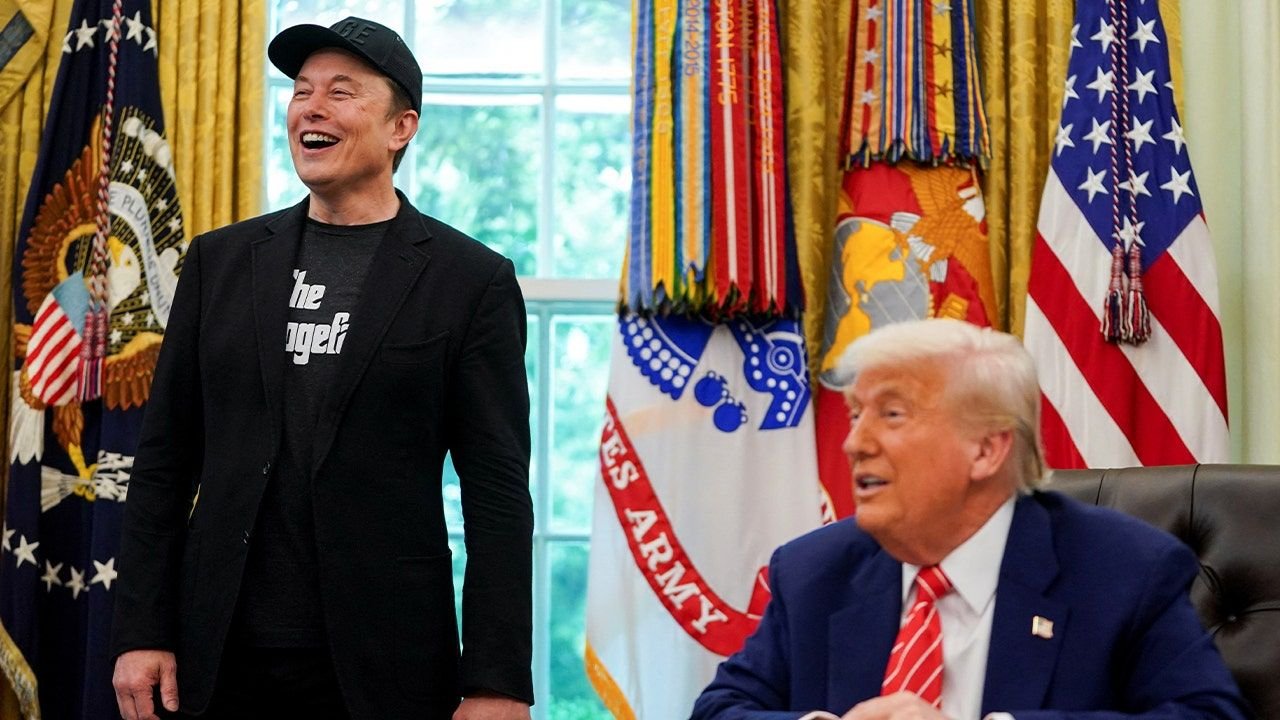
NEWYou can now listen to Fox News articles!
The fallout between Elon Musk and President Donald Trump is an evolving situation marked by a public blowup on Thursday, but their relationship ties back to Trump’s first term and even earlier.
A November 2016 CNBC interview with the Tesla CEO, who’s now the richest man in the world, took a critical tone of the now president just days before he was elected president in an upset that signified the strength of the populist movement.
«Honestly, I think Hillary’s economic policies and her environmental policies particularly are the right ones, you know, but yeah. Also, I don’t think this is the finest moment in our democracy at all,» Musk said.
«Well, I feel a bit stronger that probably he’s not the right guy. He just doesn’t seem to have the sort of character that reflects well on the United States,» he later added in the interview.
‘KILL BILL’: ELON MUSK’S CONSERVATIVE EVOLUTION PUTS HIM AT ODDS WITH TRUMP ON KEY LEGISLATION
U.S. President Donald Trump and Elon Musk attend a press conference in the Oval Office of the White House in Washington, D.C., May 30, 2025. (REUTERS/Nathan Howard)
During Trump’s first term, Musk was part of some of his economic advisory councils, which often includes CEOs, but ultimately left his post because he disagreed with the president’s move to exit the Paris Climate Accords.
«Am departing presidential councils. Climate change is real. Leaving Paris is not good for America or the world,» Musk posted at the time.
The two continued to have an on-and-off relationship, but there were some positive signs in May 2020.
«Elon Musk, congratulations. Congratulations, Elon. Thanks, Elon. For Elon and 8,000 SpaceX employees, today is the fulfillment of a dream almost two decades in the making,» Trump said at the Kennedy Space Center in May 2020.
And at the SpaceX Demo-2 launch, Trump said he and Musk communicate regularly.
«Well, I won’t get into it. But, yeah — but I speak to him all the time. Great guy. He’s one of our great brains. We like great brains. And Elon has done a fantastic job,» he said.
ELON MUSK’S NET WORTH PLUMMETS BY $34B AMID ESCALATING FEUD WITH PRESIDENT TRUMP

President Donald Trump and Elon Musk (Jeff Bottari/Zuffa LLC)
Fast forward to 2022, when Musk purchased Twitter and renamed it X, and brought back Trump’s account that November, after it was suspended after the events of Jan. 6, 2021. In 2022, Musk also announced that he would vote Republican, but indicated he would back Florida Gov. Ron DeSantis if he opted to seek the nomination.
DeSantis launched his campaign on X in a «space,» a virtual public event forum, with Musk, who also reportedly significantly financially backed the Florida governor, according to The Wall Street Journal.
However, a major turning point was in July 2024, after the assassination attempt of Trump at a rally in Butler, Penn.
«I fully endorse President Trump and hope for his rapid recovery,» Musk posted.
Musk then campaigned for the president, including a famous moment when he was jumping on stage at his comeback rally in Butler.
WOULD DONALD TRUMP HAVE WON THE 2024 PRESIDENTIAL ELECTION WITHOUT ELON MUSK’S HELP?

BUTLER, PA – OCT. 5: Tesla and SpaceX CEO Elon Musk speaks with former president Donald Trump during a campaign event at the Butler Farm Show, Saturday, Oct. 5, 2024, in Butler, Pa. ((Photo by Jabin Botsford/The Washington Post via Getty Images))
«I want to say what an honor it is to be here and, you know, the true test of someone’s character is how they behave under fire, right?» Musk said at the rally. «And we had one president who couldn’t climb a flight of stairs and another who was fist pumping after getting shot.»
«This is no ordinary election,» the tech CEO continued. «The other side wants to take away your freedom of speech.»
«Just be a pest to everyone,» he added. «You know, people on the street everywhere: Vote, vote, vote!»
The tech billionaire spent roughly $300 million through America PAC to boost swing state voter efforts, including Pennsylvania.
By the time the presidential election rolled around, Trump and Musk appeared to be close friends as the Tesla CEO was with Trump in Mar-a-Lago on election night. Over the next few days, Musk remained in Florida and was reportedly advising Trump on appointments and policy as the transition to a new administration kicked off.
A week later, shortly before Musk and the new president appeared at a SpaceX launch together in Texas, Trump announced that Musk and tech entrepreneur Vivek Ramaswamy would be heading up the Department of Government Efficiency in an effort to rid the government of waste, fraud, and abuse.
Trump described the pair as «two wonderful Americans’ and although Ramaswamy left that post in January and is now running for governor in Ohio, Musk stayed on and quickly became the face of an agency that made him the main target of attacks from Democrats pushing back on spending cuts that they argued were too drastic.
Protests erupted nationwide against Musk and DOGE including violent outbursts at his Tesla dealerships that tanked the company’s stock and were labeled as acts of «domestic terrorism» by the Justice Department.
FLASHBACK: TOP FIVE WILDEST MOMENTS FROM ELON MUSK’S DOGE TENURE AS IT COMES TO AN END
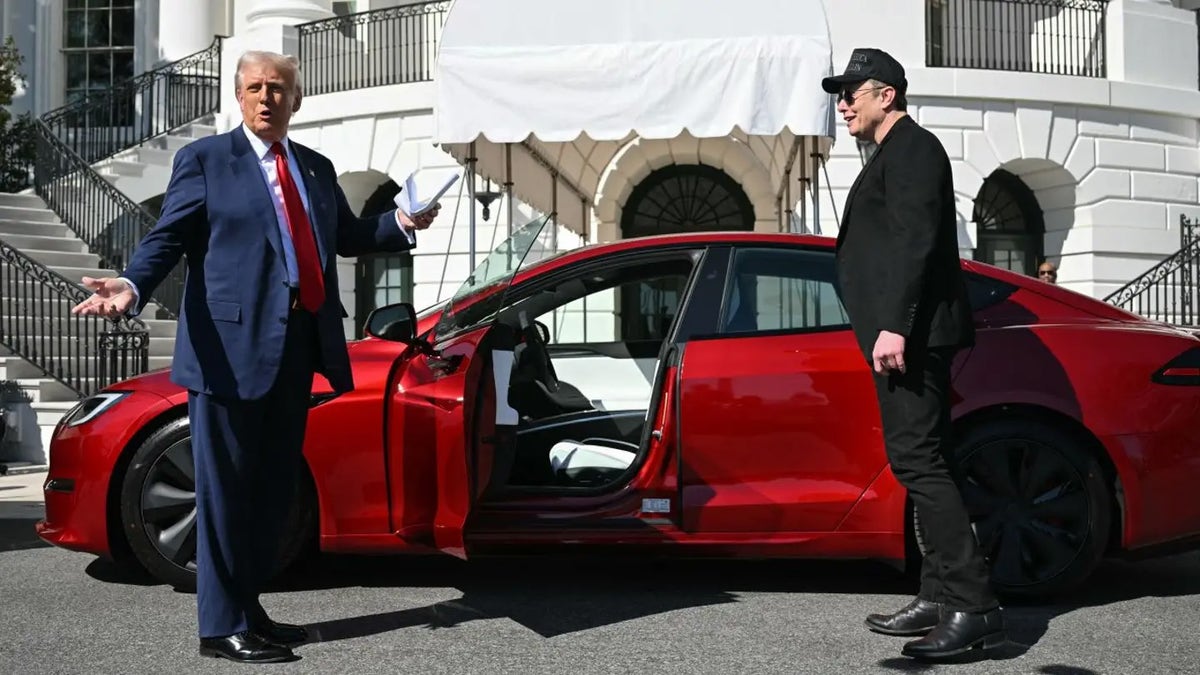
President Donald Trump bought a Tesla from Musk at the White House as a show of support earlier this year when the EV-maker faced consumer backlash over Musk’s political activism. (Mandel Ngan/AFP via Getty Images)
During the first few months of the year, Musk and Trump were spotted together at several viral events including a UFC fight, an Oval Office meeting where Musk’s son «Little X» stole the show, and a cabinet meeting in late February where Musk was the main focus.
In March, Trump hosted Elon at a Tesla showcase in front of the White House amid a dip in Tesla stock where the president told reporters he was purchasing a Tesla while touting the company.
As Musk’s time at DOGE began to wind down, his employee classification allowed him to serve for 130 days, the newly formed agency had become the poster child of anti-Trump sentiment from Democrats who consistently attacked the $175 billion in spending cuts that DOGE estimated it delivered.
Signs of fracture in the relationship began showing in late May when Musk took a public shot at Trump’s «big beautiful bill» as it made its way through Congress.
«I was disappointed to see the massive spending bill, frankly, which increases the budget deficit, not just decreases it, and undermines the work that the DOGE team is doing,» Musk said.
Two days later, Musk announced his official departure from DOGE.
«As my scheduled time as a Special Government Employee comes to an end, I would like to thank President @realDonaldTrump for the opportunity to reduce wasteful spending,» Musk said, adding that the effects of DOGE «will only strengthen over time as it becomes a way of life throughout the government.»
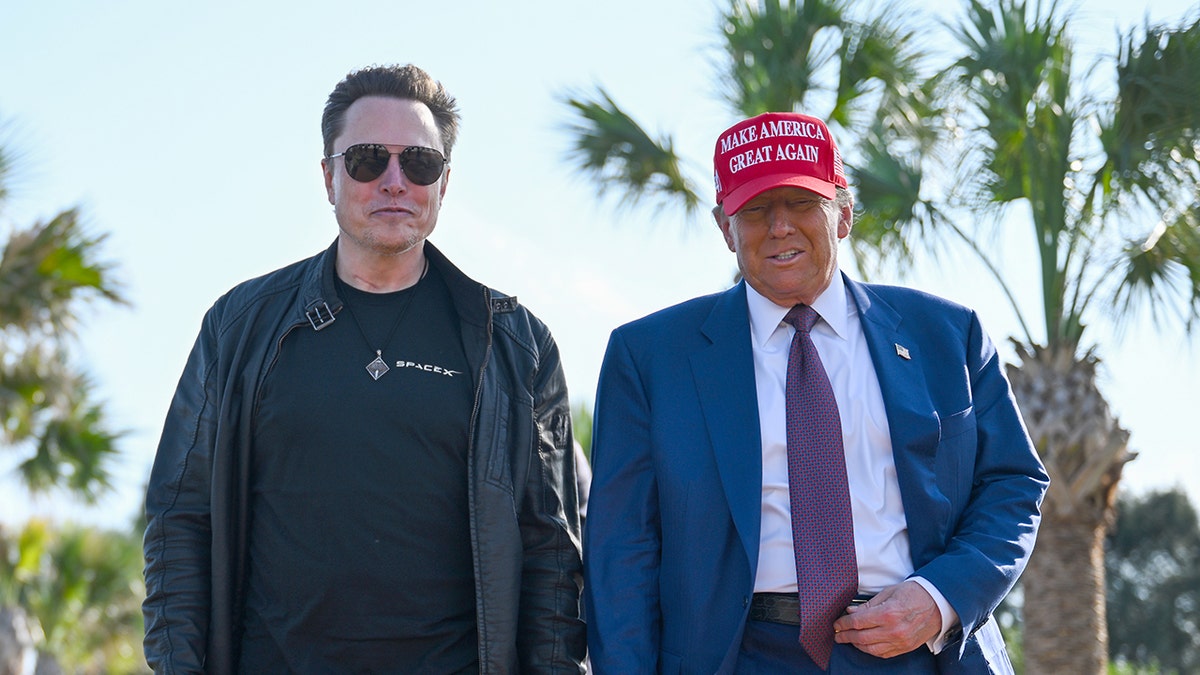
U.S. President-elect Donald Trump greets Elon Musk as he arrives to attend a viewing of the launch of the sixth test flight of the SpaceX Starship rocket (Brandon Bell)
DOGE, which fell short of Musk’s initial goal of slashing $1 trillion in spending which Musk said he still remains optimistic will happen in the future, will continue its work without Musk, who said, «I look forward to continuing to be a friend and adviser to the president.»
That optimistic tone shifted drastically on June 3 when Musk took to X, the platform he owns, and blasted the budget reconciliation bill calling it «a disgusting abomination» and criticizing the Republicans who voted for it.
«KILL THE BILL,» Musk said the next day.
A day after that, on Thursday, the feud hit a fever pitch.
While speaking with reporters in the Oval Office, Trump said that he was «very disappointed» by Musk’s vocal criticisms of the bill. The president claimed that Musk knew what was in the bill and «had no problem» with it until the EV incentives had to be cut.
On X, Musk called that assessment «false.»
Trump turned to social media to criticize Musk, who he appointed to find ways to cut $2 trillion after forming the Department of Government Efficiency (DOGE).
«Elon was ‘wearing thin,’ I asked him to leave, I took away his EV Mandate that forced everyone to buy Electric Cars that nobody else wanted (that he knew for months I was going to do!), and he just went CRAZY!» Trump said in one post.
In another post, Trump said, «I don’t mind Elon turning against me, but he should have done so months ago. This is one of the Greatest Bills ever presented to Congress. It’s a Record Cut in Expenses, $1.6 Trillion Dollars, and the Biggest Tax Cut ever given.»
«If this Bill doesn’t pass, there will be a 68% tax increase, and things far worse than that. I didn’t create this mess, I’m just here to FIX IT. This puts our Country on a Path of Greatness. MAKE AMERICA GREAT AGAIN!»
CLICK HERE TO GET THE FOX NEWS APP
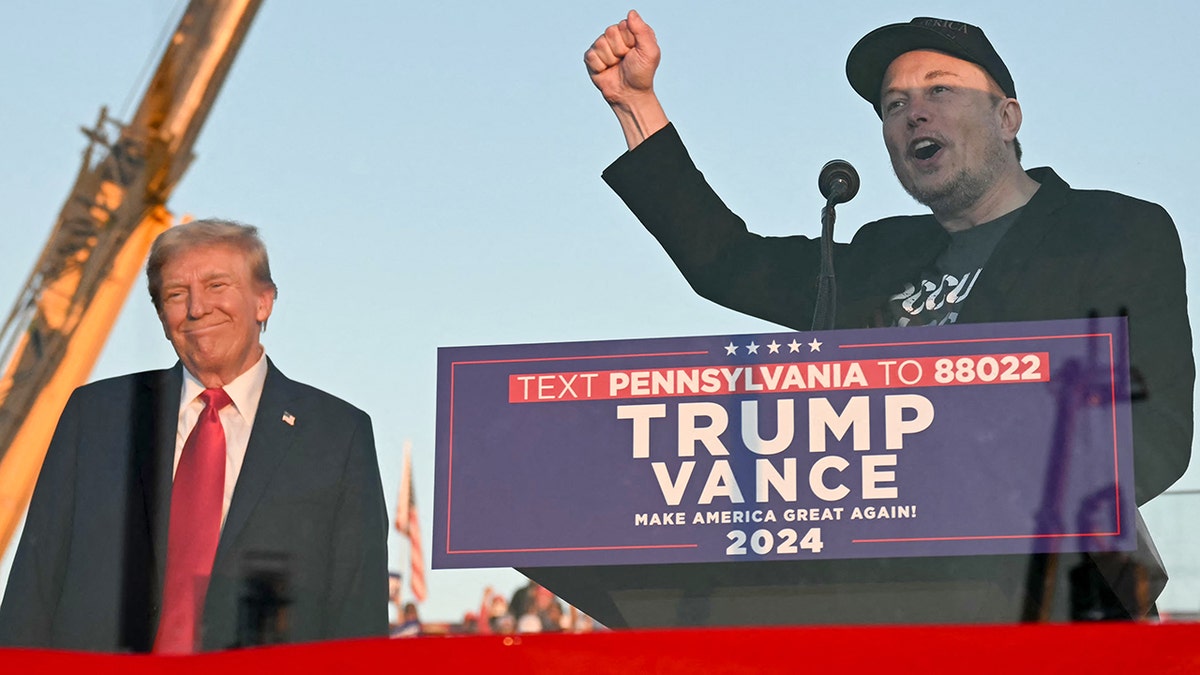
Elon Musk speaks on stage as he joins former President and Republican presidential candidate Donald Trump during a campaign rally at site of his first assassination attempt in Butler, Pa. on Oct. 5, 2024. (JIM WATSON/AFP via Getty Images)
At one point, Musk referenced late pedophile Jeffrey Epstein in relation to Trump as part of the larger tirade in a comment that several Republicans told Fox News Digital went «too far.»
Other posts from Musk included a claim that Trump would not have won the election without his help while accusing Trump of «ingratitude.» In another post, Musk suggested that Trump should be impeached and replaced by Vice President Vance.
It is unclear if a resolution to the feud is coming in the next few days. Fox News Digital reported on Friday morning that Musk wants to speak to Trump and that White House aides could possibly broker a meeting.
Trump told Fox News on Friday that he isn’t interested in talking to Musk, adding that «Elon’s totally lost it.»
Trump also said to Fox News’ Bret Baier that he isn’t worried about Musk’s suggestion to form a new political party, citing favorable polls and strong support from Republicans on Capitol Hill.
INTERNACIONAL
Primera vuelta de la elección presidencial en Chile: una verdadera primaria entre los tres candidatos de la derecha

No hay dudas. No existe analista en Chile que no afirme que habrá un balotaje presidencial. Si hace tres semanas todo parecía predecible, y apuntaba a un paso del republicano José Antonio Kast y la candidata del oficialismo, la comunista Jeannette Jara, hoy en la derecha se agitan las aguas.
Distintos sondeos han evidenciado que Kast ha perdido apoyo, el que se ha traslado al libertario Johannes Kaiser. Hoy no es tan seguro quién será el contendor de Jara, que según encuestas como Cadem, Criteria y Panel UDD, parece mantener la base de apoyo al presidente Gabriel Boric, lo que significa rondar el 30% de intención de voto.
Pero para entender esta trama, se debe realizar un breve resumen. A comienzo de año lideraba las encuestas Evelyn Matthei, la candidata de la centroderecha, heredera del Piñerismo. En Junio, las encuestas comenzaron a evidenciar un desgaste de la ex alcaldesa de Providencia y un resurgimiento de Kast, quien lideró sin contrapesos los sondes de opinión pública hasta poco menos de un mes. En ese periodo surgió el libertario Kaiser, quien fue electo diputado acompañando a Kast en 2021, pero renunció al poco andar.
“Matthei fue sobrepasada por Kast, principalmente por dos razones. Primero, el comunismo ganó la primaria de la izquierda, lo que asustó a muchos, y muchos leyeron que para enfrentar a Jara se necesita un candidato duro. El liberalismo moderado de Matthei parecía no ser suficiente. Y como segunda razón, Kast asumió un encuadre bastante pragmático, seduciendo a muchos con la idea de que el suyo será un gobierno de emergencia, sin meterse en temas valóricos o conservadores”, explica el sociólogo Roberto Munita.
Y agrega que esto mismo le ha generado su leve declive: “Lo hizo crecer por el centro, pero pierde votos por la derecha más dura. Para muchos de los que apoyaron a Kast en 2021, este candidato se fue diluyendo y perdió sus valores; Kaiser, en cambio, que es un tipo más dogmático, representa esa derecha que no está dispuesta a cambiar una coma del programa por un millón de votos. Y eso lo ha hecho irrumpir como espuma en un electorado furioso, conservador y nacionalista”, sostiene.
Si bien en Chile existe veda electoral, la ley rige sólo para el territorio chileno. Durante la veda, la encuesta Cadem sondeó la intención de votos y reveló el siguiente escenario: Jara 27%; Kast 21%; Kaiser 15%; Matthei 13%. Más atrás le siguen el independiente Franco Parisi, quien se declara opositor a Boric, con un 11% y otros tres candidatos que no superan el 3% de intención de votos.
Cadem evidencia que Kaiser ha subido 7 puntos en aproximadamente un mes, mientras otras encuestas, como la desarrollada por el Sociólogo Alberto Mayol, lo sitúan sobre Kast por menos de un 1%, mostrando también a Matthei en el mismo rango de intención de votos. Mayol ha levantado la tesis del “triple empate en la derecha”.
La disputa se vuelve importante porque ningún partido de la oposición quiso realizar primarias. La primera vuelta se transformó en el desgrane natural. Lo cierto es que, en prácticamente todos los sondeos, los votos sumados de la oposición rondan el 60%. Por eso, quien pase con Jara a la segunda vuelta podría quedar en una inmejorable ventaja para ser el próximo presidente.
En la derecha, la contienda está picante, frente a un electorado que cada vez se identifica más con este sector político, según la encuesta Criteria de Cristián Valdivieso.
Matthei busca diferenciarse de Kast, diciendo que no basta combatir la delincuencia y la inmigración, levantando otros temas como empleo y salud. Kaiser ha elevado la apuesta buscando al electorado más identitario, prometiendo incluso indultos a violadores de derechos humanos de la dictadura de Pinochet, quienes cumplen condenas en el penal Punta Peuco. Kast, por su parte, busca administrar su leve ventaja y no elevar el tono, porque necesitará apoyos para ganar y gobernar.
Otro factor que están usando los candidatos para persuadir a los electores es el “voto útil”. Según los mismos sondeos, tanto Kast como Matthei derrotarían fácilmente a Jara en una segunda vuelta, no así Kaiser.
La irrupción del libertario y la tesis del triple empate han generado nerviosismo y revitalizado una contienda que se había vuelto monótona y predecible. Una primera vuelta tipo primaria que, advierten los especialistas, podría dejar prácticamente definido quien sucederá a Boric en el palacio presidencial.
INTERNACIONAL
Body of final US hostage Itay Chen, held by Hamas terrorists, brought home after 2 years in captivity
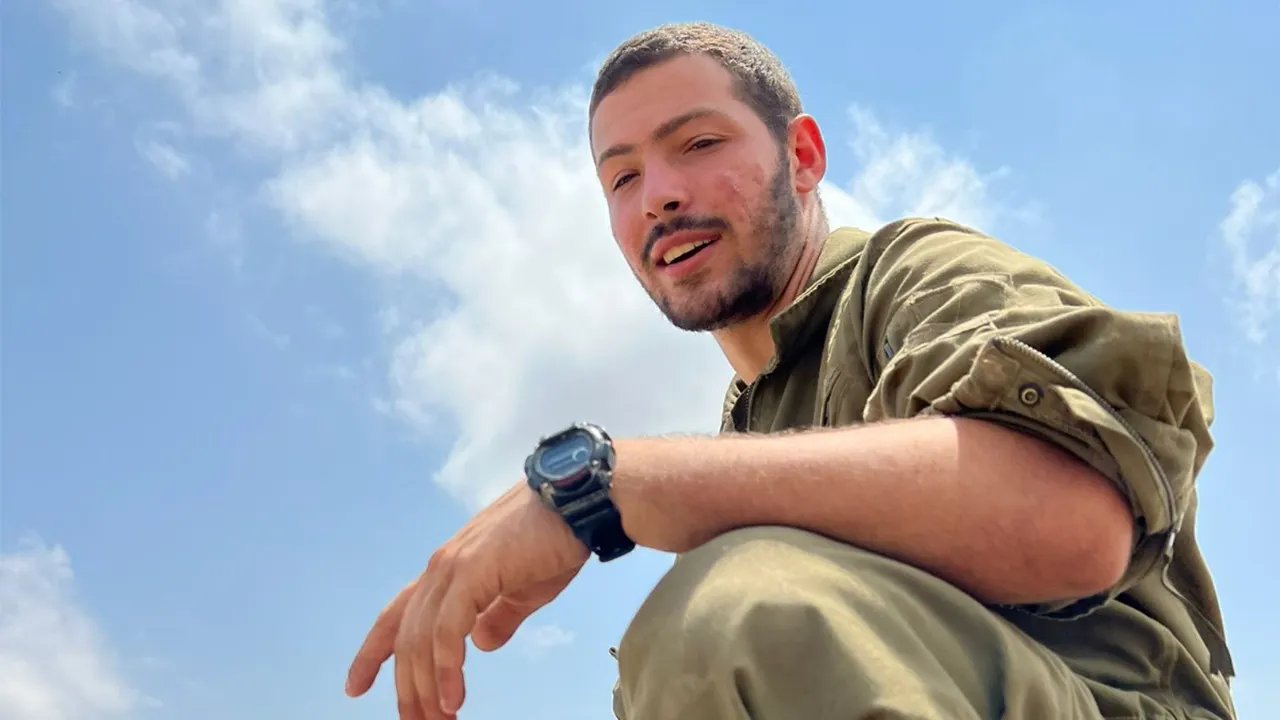
NEWYou can now listen to Fox News articles!
The body of the last U.S. citizen held by Hamas, Staff Sergeant Itay Chen, a 19-year-old dual U.S.–Israeli citizen, has been returned from Gaza for burial, the Israel Defense Forces confirmed Monday. Seven more hostages’ bodies remain in Gaza.
«Following the completion of the identification process by the National Institute of Forensic Medicine, in cooperation with the Israel Police and the Military Rabbinate, IDF representatives informed the family that Itay had been returned for burial,» the military said.
Chen served as a combat soldier in the 77th Battalion of the 7th Armored Brigade. He was killed on the morning of October 7, 2023, while fighting near Kibbutz Nahal Oz—one of the hardest-hit communities in Hamas’s brutal attack. Chen’s tank was struck during the battle, and his body was taken into Gaza. His death was officially confirmed on March 10, 2024.
BODY OF ISRAELI HOSTAGE WHO WAS HELD FOR NEARLY 700 DAYS IN GAZA IS RECOVERED
Ruby Chen’s son, IDF Sergeant Itay Chen was serving along the Gaza border when he was taken hostage by Hamas terrorists on Oct. 7. (IDF)
Itay was the middle of three brothers. He grew up in Netanya, a city in central Israel, studied in an advanced academic program, and was known for his warmth, humor, and dedication. He loved basketball, hiking, and rock climbing, and before joining the army worked as a camp counselor. Even after sustaining an injury at camp, he insisted on finishing the summer to set an example for the kids he led. Later he enlisted as an armored-corps soldier, driven by a deep sense of duty to protect others. He leaves behind his parents, Ruby and Hagit, and his brothers Roi and Alon.
Over the past year, his parents led an unrelenting campaign to bring their son home. They met with senior officials in Israel and Washington, including President Trump, advocating for the return of all hostages and the remains of the fallen.
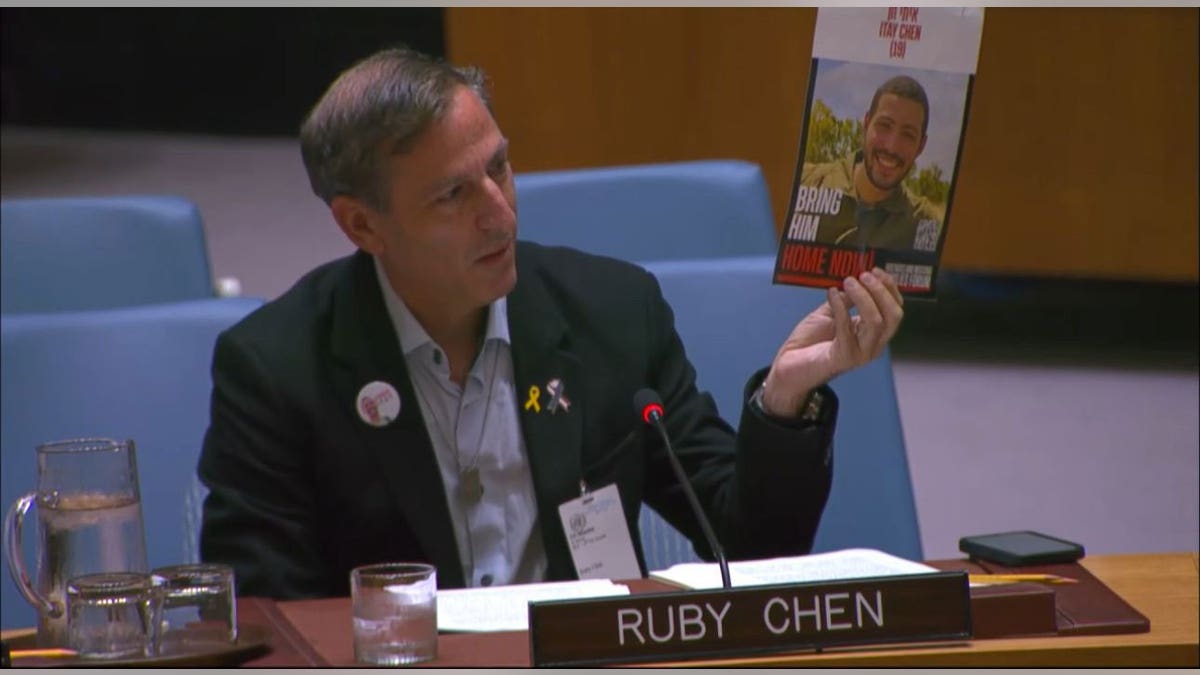
Ruby Chen addressed the U.N. Security Council, calling for more action to bring the hostages home from Gaza. Ruby’s son Itay is still being held in Gaza by Hamas terrorists. (Bianca Otero)
Ruby and Hagit Chen shared in a statement: «For 760 days, our dear and beloved son Itay, a hero of Israel, was held captive by Hamas. Last night, we received the bittersweet news of his return home to Israel. Even in this difficult moment, we remember that there are still seven hostages who must be brought back: Hadar Goldin, Ran Gvili, Meny Godard, Dror Or, Lior Rudaeff, Joshua Loitu Mollel and Sudthisak Rinthalak.»
Prime Minister Benjamin Netanyahu called the Chen family shortly after being notified of the identification. The prime minister offered his heartfelt condolences to the family, asked about the well-being of Roy and Alon, Itay’s brothers, and vowed to continue the fight without relenting until the last hostage is returned. The family thanked the Prime Minister for bringing Itay home for a proper burial in Israel.
Ruby Chen told Netanyahu that Itay’s sacrifice must not be in vain, and that there could be no return to the mindset of Oct. 6. He emphasized the need to establish a commission of inquiry, noting that the people of Israel deserve answers about what happened on that terrible day — answers for the 2,000 bereaved families and tens of thousands wounded in body and spirit.
President Trump’s special envoy for Peace Missions, Steve Witkoff, also called the Chen family for an extended conversation.
Witkoff expressed his admiration for how the family had conducted their campaign to bring Itay home, and underscored their pivotal role in highlighting the urgency of returning all remaining hostages. He added that the family helped President Trump grasp the critical importance of bringing home both the living and the deceased hostages and reinforced American determination and commitment to press forward until the last hostage is returned.
CLICK HERE TO DOWNLOAD THE FOX NEWS APP
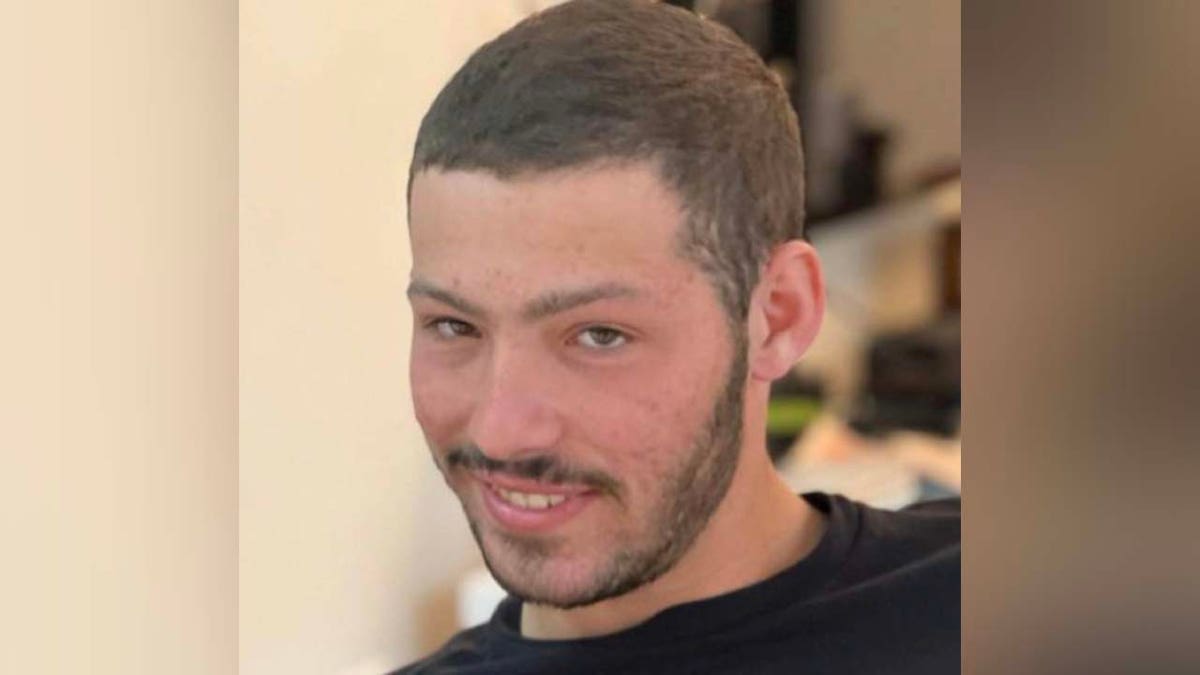
Itay Chen, 19-year-old U.S.-Israeli citizen, was on active duty in a tank unit on Oct. 7, 2023. (Hostage Family Forum)
The Hostages and Missing Families Forum said, «The return of Itay brings a measure of relief to a family that lived in agonizing uncertainty for more than two years. We will not rest until the last hostage is returned.»
Chen’s funeral will take place this week with full military honors.
israel,donald trump,hamas,terrorism
INTERNACIONAL
Hakeem Jeffries dodges question on whether Mamdani is future of Democratic Party
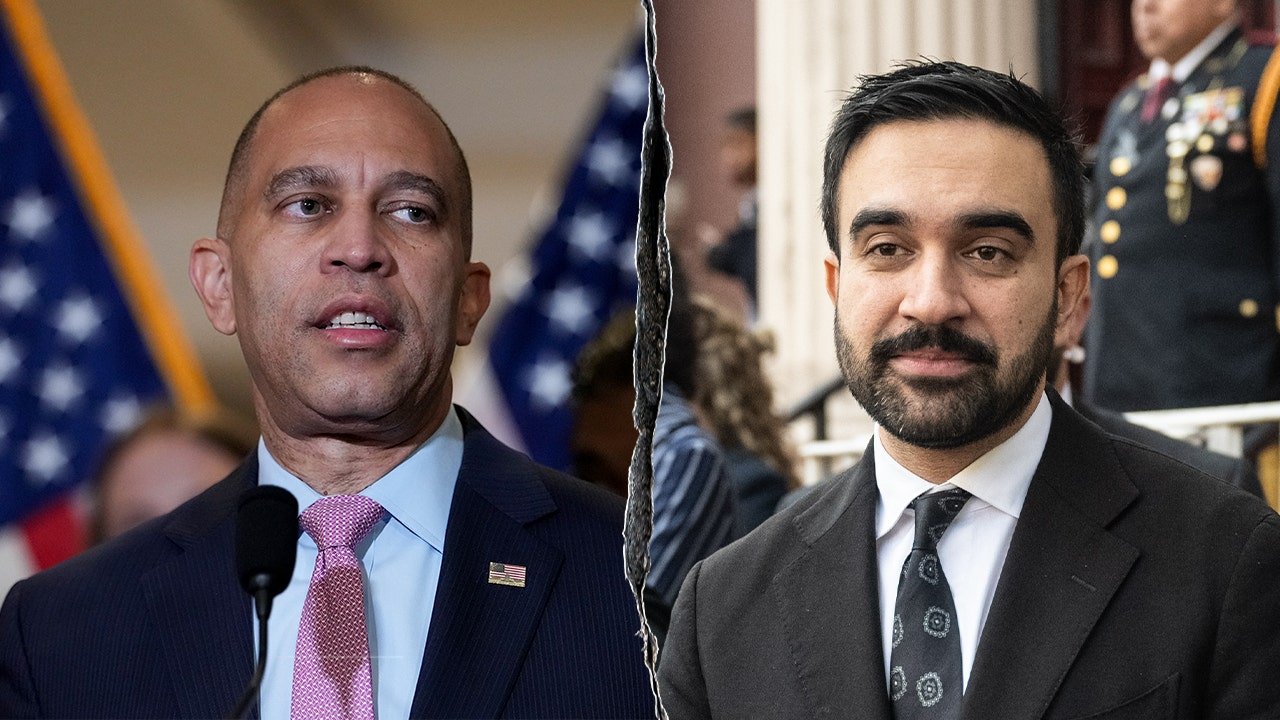
NEWYou can now listen to Fox News articles!
Following Zohran Mamdani’s decisive mayoral victory in New York City on Tuesday, House Minority Leader Hakeem Jeffries, D-N.Y., dodged a question on whether the self-proclaimed Democratic socialist is the future of the Democratic Party.
«You had record turnout in New York City for this election. Would you say that Mamdani is the future of the Democratic Party?» a reporter asked Jeffries during Wednesday’s press conference on Capitol Hill.
«Well, what Democrats have done all across the country is lean into the issue of affordability because of the fact that America’s too expensive costs are too high, and Donald Trump and Republicans, not only have they not done anything about it, they’ve made it worse as a result of the Trump tariffs as a result of them detonating the clean energy economy,» Jeffries responded.
«That’s why electricity bills are skyrocketing. And now, of course, they’re forcing these dramatically increased health care premiums to be visited upon the American people,» he added.
SOCIALIST SHOCKWAVE: ZOHRAN MAMDANI STUNS NYC AS VOTERS HAND POWER TO DEMOCRATS’ FAR-LEFT FLANK
Rep. Hakeem Jeffries, D-N.Y., and Mayor-elect Zohran Mamdani (Eric Lee/Bloomberg via Getty Images; Stephanie Keith/Getty Images)
Jeffries was also asked whether he is personally comfortable having the city he represents, the most populous city in America, be run by a socialist.
In response, Jeffries simply answered that Mamdani «is the mayor-elect of the City of New York,» saying, «It’s incumbent upon everyone to make sure that he’s successful.»
Although Mamdani was quickly endorsed by some of the country’s most progressive leaders, such as Sen. Bernie Sanders, I-Vt., and Rep. Alexandria Ocasio-Cortez, D-N.Y., the Democratic Party’s top leadership was slower to give their blessing. Jeffries himself did not answer whether he would be endorsing Mamdani until just before early voting began on Oct. 24. Senate Minority Leader Chuck Schumer, D-N.Y., never issued an endorsement of Mamdani. However, he called his electoral victory «historic.»
Mamdani, who is a 34-year-old immigrant from Uganda, is the first Muslim mayor of New York City.
WILL ELECTION DAY 2025 BE REMEMBERED AS THE RISE OF THE SOCIALISTS?
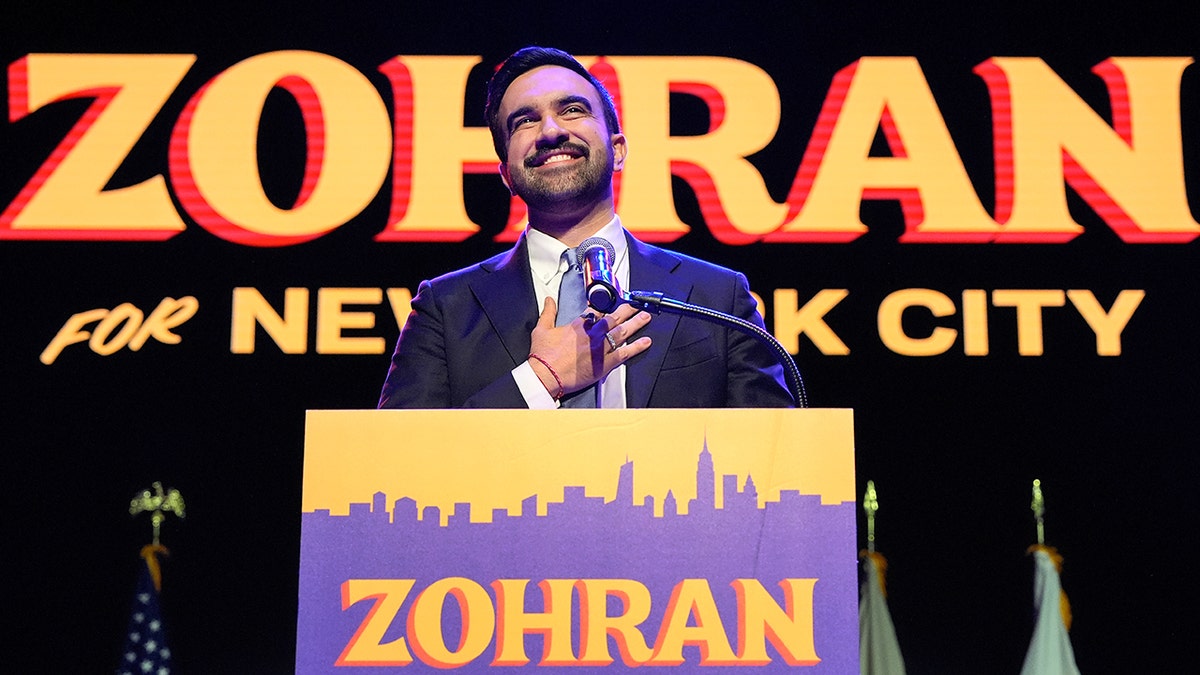
Zohran Mamdani delivers a victory speech at a mayoral election night watch party Tuesday, Nov. 4, 2025, in New York City. (Yuki Iwamura/AP)
Despite dodging these questions, Jeffries received an identical question earlier in the week about whether Mamdani is the future of the Democratic Party, prompting him to say, «I think the future of the Democratic Party is going to fall, as far as we‘re concerned, relative to the House Democratic Caucus and members who are doing a great work all across the country as it relates to our need to both take back control of the House.»
Jeffries called Tuesday night’s election a «big night for the American people» and a «big night for the Democratic Party.»
Besides New York City, Democrats also notched major victories in California, Virginia and New Jersey. He called the election results «a decisive repudiation of Donald Trump and failed Republican policies.»
This comes as the government shutdown over expiring Obamacare subsidies and healthcare benefits enters day 36, becoming the longest closure in U.S. history.
Senate Democrats have voted 14 times to reject a House-passed continuing resolution budget bill that would reopen the government.
Despite this, Jeffries indicated that he believes the Tuesday election showed the country is blaming President Donald Trump and Republicans for the shutdown and that more Democratic victories are in store in 2026.
VANCE DELIVERS POST-ELECTION REALITY CHECK, CONTENDS GOP MUST MAKE LIFE AFFORDABLE OR GET WALLOPED IN 2026
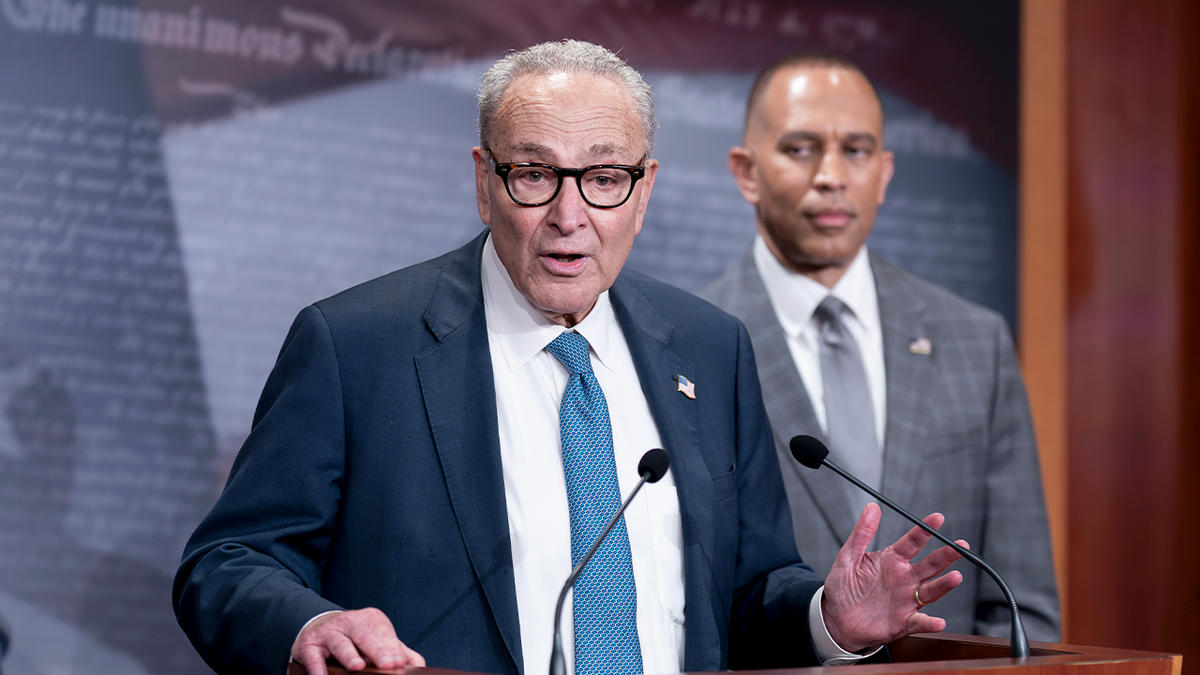
Senate Minority Leader Chuck Schumer, D-N.Y., and House Minority Leader Hakeem Jeffries, D-N.Y., right, update reporters after their meeting with President Donald Trump and Republican leaders in Washington Sept. 29, 2025. (J. Scott Applewhite/AP Photo)
«We’re going to take back control of the United States House of Representatives. So, let’s be very clear about that,» he said. «Based on the environment that we know exists, which, as Democrats, we’ve been telling you for the last several months, is the reality, but now it’s been confirmed by the American people.»
CLICK HERE TO DOWNLOAD THE FOX NEWS APP
He also praised the passage of a California redistricting proposition, which was backed by Gov. Gavin Newsom, saying it will further help Democrats retake the House.
«Stay tuned because more is coming,» he said. «Republicans are going to be unable to gerrymander their way into rigging the midterm elections. That scheme is over. Buried dead in the ground. And so, we’re going to take back control of the House and fight for every inch of territory.»
zohran mamdani,democratic party,socialism,government shutdown

 POLITICA2 días ago
POLITICA2 días agoKicillof quiere declarar en emergencia económica a la provincia y pide autorización para tomar más deuda

 CHIMENTOS3 días ago
CHIMENTOS3 días agoLaura Ubfal confirmó quién amenazó de muerte a Juanita Tinelli: «Es un conocido de…»

 POLITICA2 días ago
POLITICA2 días agoDel Presupuesto al diálogo con los gobernadores: los desafíos y negociaciones que enfrenta el nuevo Gabinete















